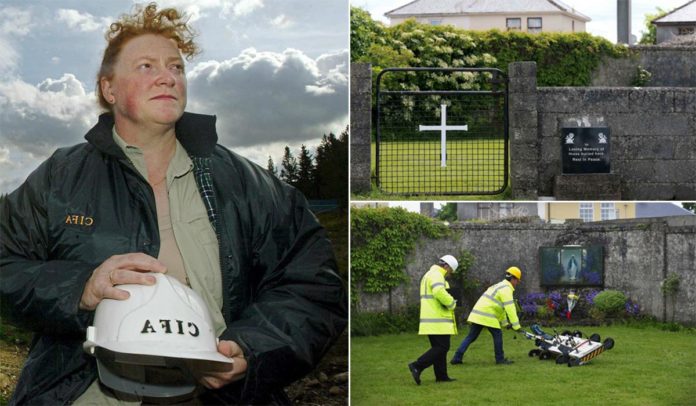By Alison O'Reilly
A leading expert in human remains who has excavated mass graves across the world has said the Mother and Baby Home Commission of Investigation must remember that the children who died in the homes have rights – including the right to an identity.
Professor Susan Black became the lead forensic anthropologist to the British Forensic Team in Kosovo and Sierra Leone.
She also worked on the Thai Tsunami Victim Identification Operation in 2005.
Speaking to the Irish Daily Mail, Professor Black said the commission – which last month confirmed it found ‘significant quantities of human remains’ at the site of the former Tuam mother and baby home in Co. Galway – must ‘get this investigation right’.
‘Whatever they do with this grave, it will set a precedent for what happens to the others. That’s why they have to get this one right. It needs pragmatism and empathy.’ In relation to the right to an identity, Professor Black said: ‘There is one law, an international law, which is the right of identity and only children have the right to an identity.
‘Whether that extends to after their death is another matter but, in terms of international law, once you are 18 you don’t have a legal right to an identity but you do if you are 17. So, a child has a legal right to an identity.
‘By signing up to the UN laws, which relate to outside the Geneva Conventions which were always about war deaths, areas where you have mass fatality events for example can be brought in under international law to say these people have a right to an identity if we can provide them with one.
‘If there are families, then they may come together as a class group that says we are the families of the missing children therefore we will be the ones to drive the action.
‘There is also a State responsibility, because there is an investigation here that something untoward may have happened, at least, if nothing else, in terms of not recording the death or burial of these children. So, the responsibility is very much on central government and the prosecution side. Professor Black also said that, although repulsive, the fact that the children were buried in a structure that ‘appears to be related to the treatment/containment of sewage and/or waste water’ may mean the remains have been preserved compared to wet soil. ‘Children’s remains are very challenging so the people who are doing the excavations need to have a really good understanding of the skeleton because sometimes you’re looking at bones that look nothing more like stones in the ground.
‘If these children were buried almost en masse then as the body decomposes all the different body parts and the different skeletons end up mixing up with each other because the ground is never static, it’s always turning over, so you’ll get a filtering down of different bones at different levels. It is not as easy as a mass grave of adults, it’s much more complicated. If the children are wrapped or in a container then that is better. The DNA can be carried out easier but you have to match it with someone.
‘You couldn’t think of a more complicated grave than a mass grave of children.’


